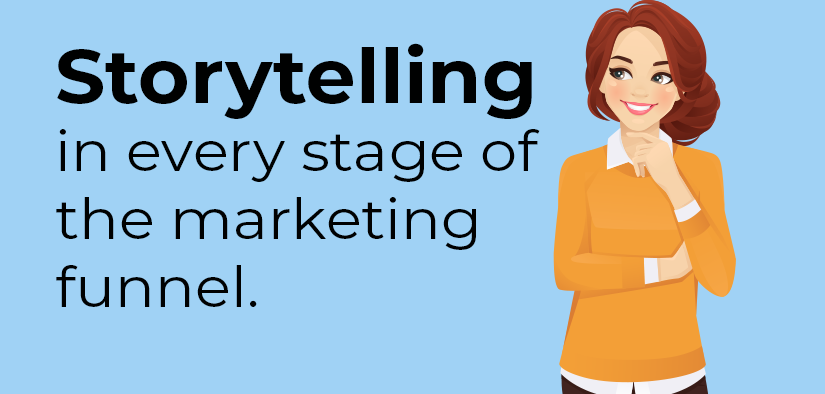
Weaving Storytelling into Every Stage of the Marketing Funnel
In the dynamic realm of digital marketing, harnessing the influence of a well-structured marketing funnel is pivotal. This funnel serves as a narrative, guiding potential customers on a journey from awareness to conversion. The art of storytelling plays a significant role in this journey, enabling us to craft compelling narratives tailored to the specific needs and behaviors of customers at different funnel stages. In this blog, we'll explore the significance of weaving storytelling into our strategies at each point of the marketing funnel.
Awareness Stage: The Story That Captivates
At the top of the funnel, where potential customers first encounter your brand or product, they are essentially stepping into the prologue of your story. They may have problems or needs, but they haven't yet considered the solutions. To captivate this audience, create storytelling content that not only informs but also engages and intrigues. Craft blog posts, social media narratives, videos, and infographics that tell a story about how your brand addresses common challenges. By weaving storytelling into your content, you'll create a narrative that resonates with your audience and piques their curiosity.
Interest Stage: The Story That Educates
As prospects journey deeper into the funnel, their interest in your product or service intensifies. They're actively seeking solutions to their problems, and they're looking for guidance. This is the chapter where you provide educational resources that tell the story of your product's value and benefits. Webinars, ebooks, whitepapers, and case studies can serve as chapters that delve into the storyline. Use storytelling techniques to explain how your solution can transform their lives or businesses, creating a narrative that educates and inspires.
Consideration Stage: The Story That Nurtures
In the consideration stage, potential customers are weighing their options and making critical decisions. Your role here is to tell a nurturing story that addresses their specific needs and concerns. Implement email storytelling and drip campaigns to maintain a connection. Personalized messages, customer success stories, and product demos should be woven into your narrative. These stories are like plot twists that guide your prospects toward a satisfying resolution—the decision to choose your brand.
Conversion Stage: The Story of the Decision
The conversion stage is where the climax of your story unfolds. Prospects are ready to make a purchase or take another significant action. To make the most of this pivotal moment, ensure your calls to action (CTAs) are seamlessly integrated into the narrative. These CTAs should be clear, compelling, and strategically placed, like the climax of a well-crafted story. Use A/B testing to refine your CTAs and make them even more persuasive. Consider offering incentives or limited-time offers as plot twists that urge potential customers to take action and be a part of your story.
Post-Conversion Stage: The Story of Loyalty and Growth
The story doesn't end with the conversion; it continues in the post-conversion stage. This is where you focus on building a long-lasting relationship with your customers. Engage them through follow-up stories, surveys, and personalized offers. Encourage them to become part of your brand's narrative by sharing their experiences through feedback and reviews. Cross-selling and upselling are additional chapters that can boost your customer's lifetime value, enriching your ongoing story together.
Conclusion
Effective marketing is akin to storytelling—a narrative that guides customers through a compelling journey. By infusing storytelling into each stage of the marketing funnel, you create an emotional connection with your audience, making your brand memorable and relatable. Craft stories that captivate at the awareness stage, educate during interest, nurture at consideration, persuade at conversion, and build loyalty and growth in the post-conversion stage. Just as a great novel evolves with the changing times, adapt and refine your storytelling strategies as consumer behavior evolves, ensuring your marketing narrative remains relevant and impactful.

